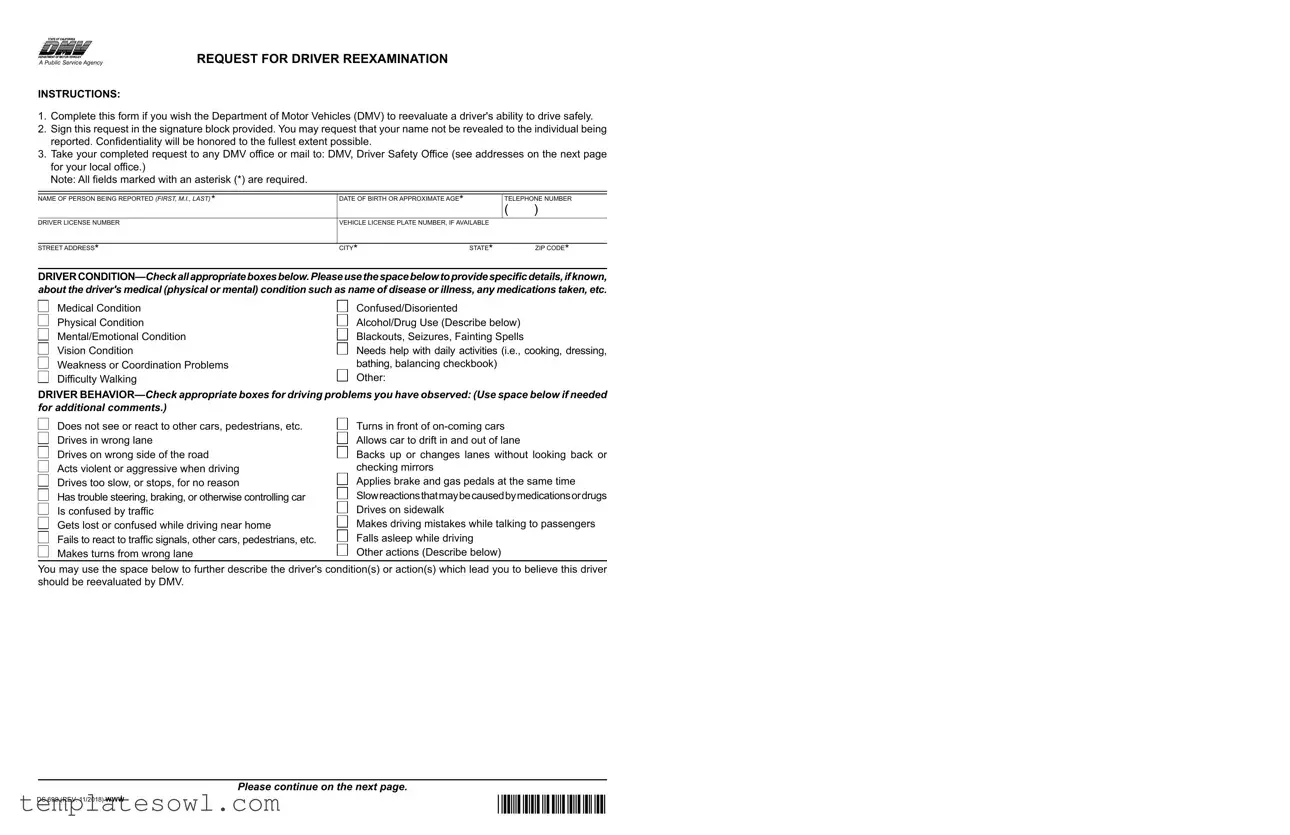What is the DMV DS 699 form used for?
The DMV DS 699 form is a request for driver reexamination. It allows individuals to formally ask the Department of Motor Vehicles (DMV) to evaluate whether a driver is still capable of operating a vehicle safely.
Who should complete the DS 699 form?
Anyone who has concerns about a driver's ability to drive safely can complete the DS 699 form. This might include friends, family members, caregivers, or professionals who observe problematic driving behavior or medical conditions that may impair driving skills.
Will my identity be kept confidential when I submit the DS 699 form?
Yes, if you check the box requesting confidentiality, your name will not be revealed to the driver being reported. The DMV strives to honor confidentiality to the fullest extent possible.
What information do I need to provide about the driver being reported?
You need to provide the driver’s full name, date of birth or approximate age, telephone number, driver license number, vehicle license plate number (if available), and their address. Additionally, you'll assess their condition and driving behaviors that raise your concerns.
What types of driver conditions can I report on the form?
The form allows you to check boxes for various medical and driving conditions. These include physical or mental health issues, coordination problems, vision impairments, and signs of confusion or drug/alcohol use. You also have space to provide additional details if necessary.
Can I provide detailed information about the driver's behaviors?
Absolutely. The form includes specific boxes for you to describe any concerning behaviors you have observed while the driver was operating a vehicle. You can write comments about actions like driving too slowly, failing to react to traffic signals, or dangerous maneuvers.
How do I submit the DS 699 form?
You can either mail the completed form or deliver it in person to your local DMV Driver Safety Office. The addresses for various locations are provided on the form, ensuring you can find the nearest office.
Is there a deadline for submitting the DS 699 form?
There is no specific deadline mentioned for submitting the form. However, it’s advisable to submit it as soon as possible after you observe concerning behavior. Prompt action may be necessary for the safety of the driver and others on the road.
What happens after I submit the DS 699 form?
Once submitted, the DMV will review the information provided. They may decide to contact the reported driver for a reexamination of their driving abilities. Based on the results, the DMV could take various actions, which may include reissuing the driver's license or imposing restrictions.




 Relative
Relative 

 Caregiver
Caregiver  VisionSpecialist
VisionSpecialist 
 Court/Code
Court/Code
